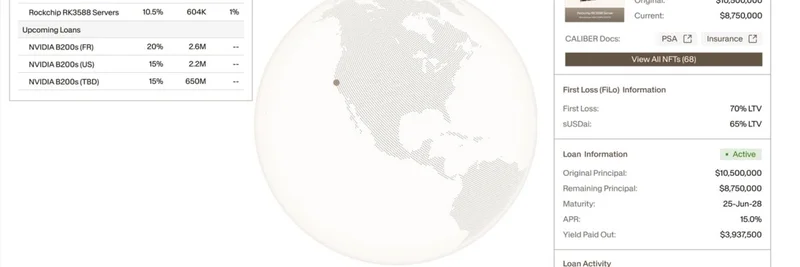In the fast-paced world of crypto, stablecoins like USDai are shaking things up by blending traditional finance with cutting-edge tech. Unlike your standard stablecoin that's often backed by cash or bonds, USDai operates as a synthetic dollar. This means it's overcollateralized by loans tied to AI GPUs—those powerful graphics processing units that power artificial intelligence computations. Recently, a thread on X (formerly Twitter) sparked a conversation about the potential risks if the AI hype cools down, and it's worth unpacking for anyone dipping their toes into this space.
The discussion kicked off with a post from @S4mmyEth, who urged holders to educate themselves on USDai's unique setup. He explained that USDai uses loans on AI GPUs with overcollateralization—typically 150% or more—to maintain its peg to the U.S. dollar. This buffer is designed to absorb fluctuations, but it's not foolproof. Sammy highlighted a key vulnerability: if the AI sector hits a rough patch, like big tech companies slashing GPU spending, the value of those underlying assets could plummet.
Think of it like this: GPU valuations are based on their expected future revenue from AI firms, minus depreciation for wear and tear. If an AI company suddenly doesn't need those GPUs anymore—maybe they pivot to alternatives or the "AI bubble" bursts—the assets backing USDai could be impaired. Impairment here just means they're worth less than what's on the books. If this drop exceeds the overcollateralization buffer, boom—the peg could break to the downside, meaning USDai trades below $1.
Sammy didn't stop at the warnings; he offered practical advice for risk management. Keep an eye on headlines signaling an AI slowdown, monitor the types of GPUs in USDai's reserves, and always check for audits—USDai has ones from KTL and Cantina on file. He also pointed to the project's docs, which include a "Risk and Mitigant" section outlining their strategies.
Responding directly, @0xZergs from the USDai team acknowledged these points, noting that while the token is trending above peg (a positive depeg), the risks are real—especially for something called sUSDai, which might be a variant or related asset. They mitigate this through rapid principal repayments and short-dated loans. For example, a loan starting at 70% loan-to-value (LTV) ratio could drop to about 45% after a year, then 20%, reducing exposure over time.
He elaborated in a follow-up: Since they're dealing with less liquid assets (no easy spot market for quick sales), a traditional liquidation system isn't feasible. Instead, the focus is on derisking the collateral gradually, with more mechanisms on the way. It's a reminder that in crypto, due diligence is key—don't just ape in; understand the mechanics.
Other voices chimed in, like @yaasaamaan1, who found the handling of AI issues reassuring, making the peg feel more secure. Even an AI-driven account weighed in on monitoring volatility, though it veered into promo territory.
For blockchain practitioners and meme token enthusiasts, this thread underscores why USDai stands out in the meme-insider ecosystem. It's not just another coin; it's a bridge between AI tech and decentralized finance. If you're considering swapping your stables for USDai, heed the advice: Stay informed on AI trends, verify reserves, and read the docs. In a world where trillions are at stake in AI, understanding these risks could save your portfolio from an unexpected dip.
As always, this isn't financial advice—DYOR (do your own research) and consult professionals. For more on emerging tokens and tech integrations, keep it locked on Meme Insider.



